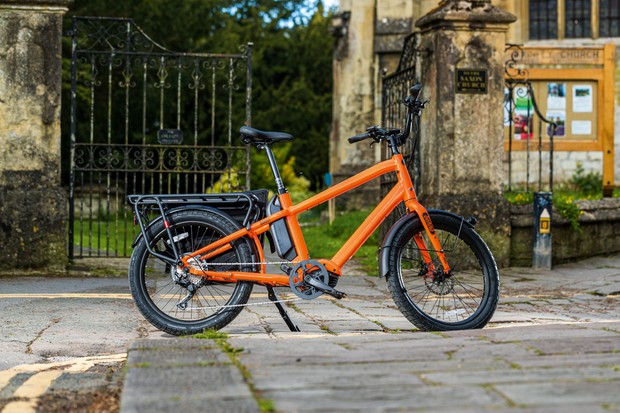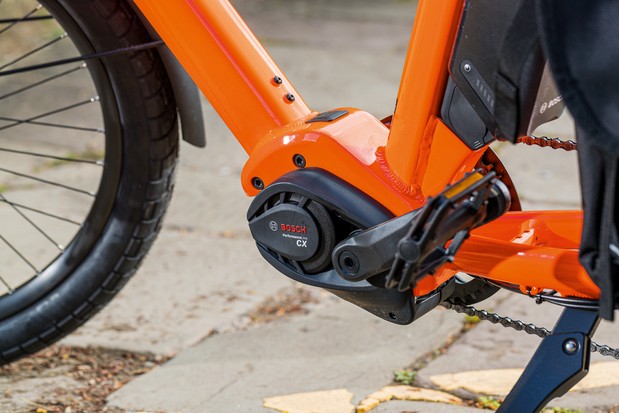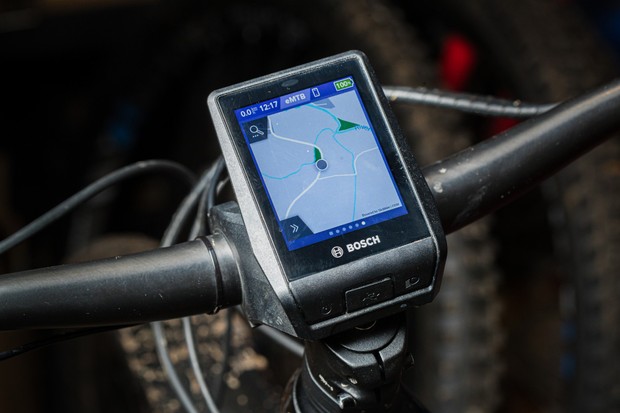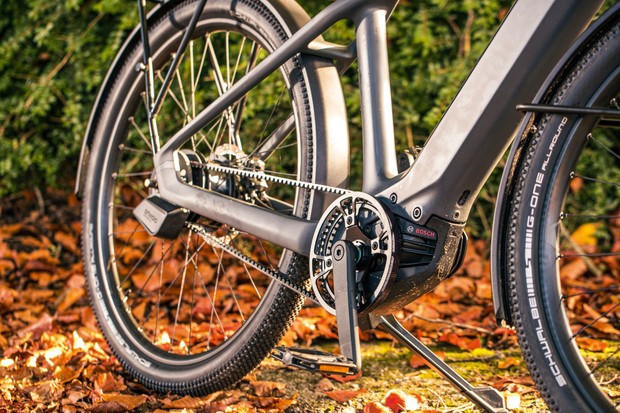Electric Bikes: A Rapidly Growing Trend
Electric bikes have been steadily gaining popularity due to the additional assistance provided by their motors. These bikes are favored by riders for various purposes, ranging from commuting by bike in bustling cities to weekend road rides and trail adventures at popular centers.
However, it is crucial to note that electric bikes are subject to different laws and regulations compared to regular non-assisted bikes.
So, what exactly defines an electric bike from a legal perspective? How much assistance can these ebikes offer, and what are the laws governing their usage?
In this article, we aim to address these queries, starting with an exploration of the laws that govern electric bikes in the United Kingdom. It is worth noting that these laws are consistent with the regulations in the European Union at the time of writing. Moreover, we will also delve into the laws applicable in the United States and Australia.
If you would like more information, we recommend checking out our buyer’s guide to select the perfect electric bike for your needs and our comprehensive explainer on the functioning of electric bikes. Furthermore, if you already own an ebike, we have expert advice on how to effectively maintain and keep your machine in optimal condition.
Understanding the Legality of Ebikes
Ebikes are absolutely legal and are actively encouraged as a means to encourage more individuals to take up cycling. These bikes provide extra assistance and can contribute to fitness gains. Additionally, they can help reduce the number of short car journeys made. To explore the full range of benefits associated with riding an electric bike, do check out our article on the 14 advantages that come with embracing this mode of transport.
You can easily find electric bikes equipped with powerful electric motors across all major bicycle categories. Whether you prefer road biking, hybrid bikes with flat bars, or thrilling mountain biking adventures, there is an electric bike available for your preference. Furthermore, you can even explore electric folding bikes, gravel bikes, and cargo bikes. To get a comprehensive understanding of the best electric bikes on the market, be sure to refer to our handy guide, which provides detailed insights into the different types of electric bikes available.
There are certain rules and regulations that govern the permissible speed limit and power output for electric bikes, which we will elaborate on below. However, if an electric bike adheres to these regulations, it is completely legal to ride it in the same places as you would a regular bicycle.
You also have the option to purchase an electric bike conversion kit, which can transform a manual pedal bike into an electric one. Once again, as long as it adheres to the prescribed power output and speed regulations, this is perfectly legal.
For a more comprehensive understanding of how electric bikes function, you can consult our beginner’s guide to electric bikes.
## What constitutes a legally defined electric bike?
Most electric bikes in the UK fall under the category of “electrically assisted pedal cycle” (EAPC). Russell Burton / Immediate MediaBegin by understanding the laws that pertain to electric bikes in the UK, which commences with defining what qualifies as an ebike or an electrically assisted pedal cycle (EAPC).
In this category, not all electrically powered two-wheeled vehicles are included – we will cover other types later. Furthermore, an ebike does not necessarily have to possess two wheels, as the legislation also includes EAPCs with more than two wheels.

### What defines an EAPC?
According to gov.uk, an EAPC must fulfill the following criteria:
- It must have pedals that can be utilized for propulsion
- It should display either the motor’s power output or the manufacturer’s details
- It should display either the battery’s voltage or the bike’s maximum speed
- The electric motor must have a maximum power output of 250 watts
- It should not possess a motor capable of propelling the bike at speeds exceeding 15.5mph
An EAPC must possess an electric motor with a maximum power output of no more than 250 watts. Moreover, it is imperative that the bike has pedals for propulsion. Russell Burton / Immediate MediaNow, let’s delve into each of these aspects in greater detail.
The Function of an Electric Assist Pedal Cycle (EAPC)
An EAPC’s motor can solely provide assistance when the cyclist is actively pedalling the bike. Within the EAPC system, there are integrated sensors that recognize the force exerted on the pedals by the rider. The motor then distributes power in proportion to this force, ensuring that the bike doesn’t speed away uncontrollably or propel the rider without any pedalling effort involved.

Electric Bike Laws and Speed Limits
According to electric bike laws, the motor assistance must cease when the speed reaches 15.5mph (25km/h) in the UK, EU, and Australia. This speed limit remains consistent across these regions, with a slight variation occurring in the USA, where the limit increases to 20mph.
It is indeed possible to ride an ebike at a higher speed; however, once the speed threshold is surpassed, the motor assistance will disengage, and the rider will be solely reliant on their own physical exertion. Descending a slope may lead to speeds surpassing 15.5mph, while a more physically fit cyclist can reach this speed on flat terrain, particularly when using a high-performance, drop-bar electric road bike.
Limitations and Power Output of Electric Bikes
Within the UK, EU, and Australia, the assistance provided by electric bikes is restricted to 15.5mph. In addition to this speed limitation, the power output of the motor should remain within a continuous range of 250 watts. However, it is worth noting that peak power output may exceed this value, which explains why some electric bikes, especially e-mountain bikes, boast significantly higher quoted power outputs.

It is important to mention that a separate category of cargo-carrying electric bikes exists, which can be equipped with a more potent motor of up to 1,000 watts. Nonetheless, adherence to the L1e-A classification entails additional requirements such as rider licensing, bike registration, and insurance. Meanwhile, the majority of electric bikes available in the UK fall under the EAPC classification, which will be our primary focus here.
Regulations for Riding an Ebike
When an electric bike falls within the EAPC definition, it possesses the same legal status as a regular, non-assisted bicycle in the UK. Therefore, riders of EAPCs follow the same rules and regulations as non-assisted cyclists. However, it is important to note that to ride an electric bike, the minimum age requirement is 14 years old.
You don’t need to register the bike and you don’t need to have insurance.
Although we’d recommend having insurance that covers theft, personal accident, and third-party liability as a minimum. We’ve got a guide to choosing the best bicycle insurance for your needs, and you can even buy specific electric bike insurance policies.

You are also not legally required to wear a helmet in the UK.
Although we’d advise always using one, particularly with the higher weight and average speed of an electric bike. You are also not legally required to wear a helmet in the UK.
It’s advisable to keep your bike well maintained to ensure your safety when riding.
Read our simple guide to electric bike maintenance. With any bike, it’s advisable to keep it well maintained to ensure your safety when riding.
In the UK, you are not legally required to wear a helmet when riding an electric bike. You can ride an ebike anywhere you are permitted to ride a regular bike. That includes on roads, cycle lanes, and bridle paths. Just like a non-electric bicycle, you’re not allowed to ride on pavements, unless they’re designated for mixed cycle and pedestrian use. Additionally, you have to obey the Highway Code, including stop signs and traffic lights.
If you’re not confident that you know the rules when riding, it’s worthwhile enrolling in a cycle safety class and getting to grips with the Highway Code.

Are the laws different in Northern Ireland?
Until mid-2020, by a legislative quirk, electric bikes were treated differently in Northern Ireland than in the rest of the UK. However, those rules were changed in May 2020. Now, the law in Northern Ireland is in line with the rest of the UK, and an ebike that complies with the EAPC regulations above is treated like a non-electric bicycle.
Watts and torque (Electric Bike Motors)
The power of electric bike motors designed for off-road riding is often measured by their torque. These motors are specifically crafted to excel in challenging conditions, making them ideal for steep inclines and loose terrains. One prominent example is the Bosch eBike Systems, which ensures a continuous peak output of 250 watts to meet the classification standards of an Electrically Assisted Pedal Cycle (EAPC).
In some cases, these motor systems come equipped with a boost button conveniently located on the handlebar. By holding this button down, riders can temporarily access even more power, which proves valuable when seeking quick acceleration. However, it is crucial to note that regardless of the boost button’s activation, the motor must cut out at a speed of 15.5mph.
It is essential to consider not only the wattage when evaluating an ebike motor’s performance but also its torque output and assistance levels. Torque refers to the rotational force produced by the motor, directly influencing the bike’s acceleration capabilities and its ability to conquer steep slopes. Unlike wattage, the legislation does not place any restrictions on an ebike’s torque output.

Most electric bike systems are equipped with a highly informative display that provides riders with valuable data about the motor’s power settings and battery life. Advanced units may even include GPS capabilities, further enhancing the riding experience. One such instance is Russell Burton’s design for Immediate Media, exemplifying the integration of comprehensive information within the display.
The torque output of electric bike motors varies significantly, primarily depending on the intended purpose of the system. For flat-bar electric hybrid bikes and drop-bar road ebikes, you can expect torque outputs ranging between 40Nm and 60Nm. For instance, Bosch’s Active Line motor, specially designed for urban riding, boasts a maximum torque of 40Nm.
On the other hand, electric mountain bikes require more substantial torque due to their weight and their need to navigate challenging off-road terrains. These bikes often exhibit torque outputs starting at 60Nm and reaching an impressive 85Nm, which can be witnessed in Bosch’s Performance Line CX motor.

Applicable regulations for non-compliant electric bikes
Under the legal definition of an EAPC, there are specific types of electrically powered bikes that do not fall within the regulations.
Speed pedelecs
One of these types is the speed pedelec, which requires pedaling but has a motor output exceeding 250 watts and is not speed limited to 25km/h. These bikes are often referred to as speed pedelecs.
For example, renowned Swiss brand Stromer manufactures a range of electric bikes with motors that have power outputs ranging from 670 watts to 850 watts. These powerful motors allow the bikes to reach speeds of up to 45km/h.
Twist-and-go
The second category is known as the “twist-and-go” electric bikes. These models feature a twist grip on the handlebar to control the motor input, eliminating the need for continuous pedaling to keep the bike in motion.
It is important to note that these twist-and-go “accelerators” differ from the controllers commonly found on compliant EAPCs, which enable riders to select different levels of assistance.
Both speed pedelecs and twist-and-go bikes are treated as petrol-powered mopeds under UK law. Therefore, they are subject to taxation and mandatory insurance. Riders must also possess a valid license and wear a motorcycle-style helmet. These bikes are only permitted on roads or unrestricted byways.
EU regulations
The regulations governing electric bikes in EU countries follow a similar framework to those in the UK, as they were established at the EU level while the UK was still a member. Hence, the maximum assistance limit remains at 25kph, and the rules regarding the maximum continuous power output of 250 watts apply. Speed pedelecs are subject to similar treatment.
Electric bike regulations in the USA
It is crucial to note that electric bike laws vary from state to state within the USA, so it is essential to consult the local regulations in your area. According to federal law, specifically the Consumer Product Safety Act, a “low-speed electric bicycle” is defined as a two- or three-wheeled vehicle with a maximum motor output of 750 watts and assistance limited to 20mph.

An electric bike that adheres to these regulations is treated, under federal law, in the same manner as a non-electric bicycle. However, there are significant discrepancies at the state level regarding the classification and usage of electric bikes. These differences encompass regulations related to licensing requirements, helmet use, and insurance.
States also often implement a tiered system for electric bikes, comprising three classes. While the Class 1 ebikes broadly adhere to the 750-watt motor limit and 20mph assistance limit mentioned earlier, Class 2 or 3 ebikes may allow assistance at higher speeds or utilize a twist-and-go system.
It is crucial to note that laws can differ between states, so it is important to familiarize oneself with the specific legislation within the state where you intend to ride.
Electric bike regulations in Australia
In Australia, electric bikes are divided into two categories. The second category bears similarities to the regulations in the UK and Europe, encompassing a maximum speed of 25kph and a maximum power output of 250 watts.
These bikes can also feature a throttle that ceases operation at 6kph, functioning as a walk mode to assist with maneuvering the ebike when dismounted. Walk mode is a common feature found in electric bike motors. Beyond 6kph, pedaling is required to keep the bike moving.
The first category comprises electric bikes that are solely throttle operated. These bikes must also adhere to an assistance limit of 25kph, but their maximum continuous power output is capped at 200 watts.
Regardless of the specific category, it is mandatory to wear a helmet while riding an electric bike in Australia, and functioning front and rear lights are also required.








